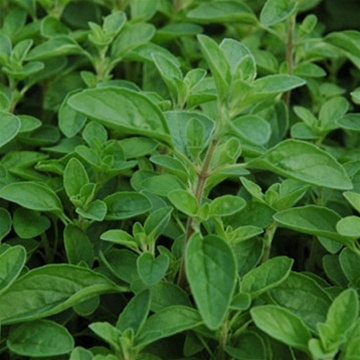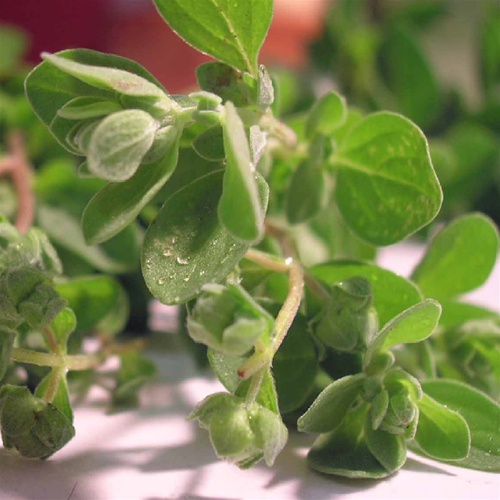by Kenan White | Oct 17, 2015 | Herbs |
Widely cultivated across Europe and Asia for centuries, common comfrey (symphytum officinale) is a humble plant with dramatic benefits. From soothing herbal remedies for skin irritations, bruises, and osteoarthritis to potent fertilizers, mulches, and foliar sprays, the easy-to-grow comfrey plant has a welcome place in any organic-based home garden.
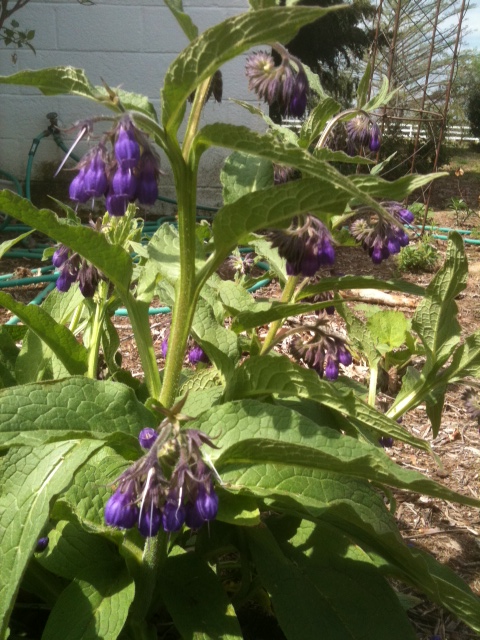
Skin-Soothing, Regenerative, and Anti-Bacterial Properties
Comfrey contains high amounts of rosmarinic acid, tannins, and allantoin compounds that help to promote the growth of new cells, making this herb a the go-to topical for a variety of skin, muscle, bone, and joint issues.
1. Healing Bruises and Sores: If you have access to fresh leaves from the garden, a comfrey poultice is said to speed the healing of sore or bruised tissues and ligaments.
2. Soothing Skin Irritations: Salves, teas, oils and ointments are all popular treatments for a variety of irritant issues, including bug bites, sunburns, abrasive injuries, and certain rashes or over-dry patches of skin.
3. Antibacterial: Water-based applications like teas and simple compresses can deliver a potent antibacterial punch that can help to reduce the chance of infection and speed healing. Simply dampen a clean cloth with a strong comfrey extraction and apply directly to the affected area. (more…)
by Briscoe White | Jul 25, 2015 | Herbs, Inspiration |

Here is a confession: I haven’t always been an herb grower. Sure, I grew herbs along with everything else. Proven Winner Annuals, perennials, succulents, foliage plants, bulbs … you name it, I grew it. We had a garden center in Richmond, VA and my customer base was my guide. Whatever they wanted, I grew. Or, was it the other way around? Whatever I grew, they wanted? We had a very good relationship, my customers and I. It was truly an EXCHANGE.
But, in 2005, when I decided to close the store, my intention was to take EVERYTHING online. I would keep growing as I had been since 1985. Guess what? Everyone else had the same idea. There were plenty of folks growing and selling perennials online. I just had to get in line. It didn’t take me long, with the help of Google, to realize that what folks REALLY wanted was a quality herb grower. I had grown herbs all along, and actually loved growing them. But, here was my chance. I could begin growing MORE than the ‘usual suspects’; I was a kid in a candy shop. Send me the seeds, and I will grow them.
So, the unintended consequence? Enter some of the ‘unusual suspects’ with a BIG following. Among the most important?
This was one of those eye opening experiences ~ I began growing two types, Holy Red and Holy Green. I was getting seeds from a variety of vendors, but that was my first mistake. What was I really growing? Among my first customer was a wonderful grower from Texas. She was Hindu, and she educated me right away: ‘this is not Holy Basil’! Well, it said so on the seed package. My education began. (more…)
by Kenan White | Apr 24, 2015 | Gardening, Herbs |
Lavender is one herb that many will find instantly recognizable, either by its soothing aroma or the distinctive purple blooms that grow in upright spears and bring droves of bees into the garden. While lavender can take a little longer to get established, this classic herb is well worth the effort. From aromatherapy treatments and topical applications for skin irritations and burns to a versatile potpourri and novel ingredient in recipes sweet and savory, lavender has a wide variety of uses around the home.
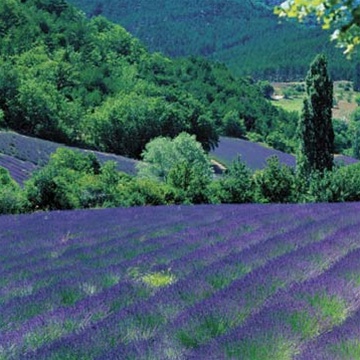
1. Treating Insomnia and Agitation: Aroma therapists have long touted lavender’s superior power to soothe nerves and aid in getting a sound night’s sleep. These treatments typically involve breathing in a lavender-laden vapor, drinking an infusion made from the dried petals, or dabbing a bit of the essential oil under your nostrils. A recent clinical study has also shown that lavender oil taken in capsule form can help to relieve anxiety and insomnia. Along with a soothing bath, when it is coupled with a good mattress from somewhere like Leesa, could also promote good sleep.
2. Relieving Headaches: Rubbing the essential oil of lavender on your temples or using a lavender-based aromatherapy treatment is also said to help provide quick relief for headaches. Drinking a warm infusion of lavender petals can also help to relieve flu and cold symptoms.
3. Topical Treatment for Skin Irritations: As a potent anti-inflammatory, lavender infusions are also helpful for treating bee stings, burns, and other topical irritants. Some people find that lavender honey, which is made by bees feeding primarily on lavender nectar, to be more effective than the essential oil for treating uninfected wounds. In addition to anti-inflammatory agents, lavender also has a natural antiseptic quality that makes this herb a useful addition to the herbalist’s medicine cabinet. (more…)
by Kenan White | Sep 16, 2013 | Gardening, Herbs, Seeds |

I am a Road Warrior! Before your mental image focuses, let me qualify that with the word “gardening”. So, what I really am is a Gardening Road Warrior. Let me explain that I am not zipping down the road at blinding speeds. No I am the one standing in the roadside weeds while cars and trucks of all kinds hurdle past me in their rush to get somewhere. The warrior part comes from the fact that one must be somewhat brave to be out here on the side of the highway. Safety aside, it looks, and feels a little weird too.
If not a warrior, then maybe I can be a hunter and gatherer? That is exactly what I am doing! I am out here on the side of the highway hunting for dried wildflowers so that I may gather their seeds. I have always been a traditional type of gardener, and feel this activity really reaches back to the roots of gardening. Having something I want as bad as the seeds I am hunting, gives the activity real meaning. When harvesting seeds, I am so intent upon my mission that I often forget it takes place on the roadside. Seeds are more about what they are going to be than just the seeds themselves.
Collecting wildflowers seeds, I image what would happen if I sowed them all this way or that. Creating visions of color that change with the season. A meadow in bloom or the Spring Prairie, with enough seed and a little land anything is possible. The small bags of seed I collect can plant acres of land, how such a small amount can create so much is one of the great mysteries we will never unfold. But as long as we know how, we need never know why seeds do as they do. All we need know are the few small requirements each seed needs to release their magic in the world. Is there anything else that says, “Just add water,” and will grow the Garden of Eden?
Yes, seeds are magic. And I can share in that magic. When possibilities are boundless, I can be a Road Warrior, or a hunter-gatherer, or prompt into reality a beautiful vision, or anything I want to be. As long as I do it in the garden, where just about anything is possible.
by Kenan White | Jul 10, 2013 | Herbs, Recipes |
What Is Marjoram And How Can I Use It?
Whether you are a veteran chef or you are just learning how to cook, you are sure to benefit greatly by adding herbs to your list of favorite cooking ingredients. Foods that are cooked with herbs simply taste better. When first starting out on your culinary journey, it can be intimidating to look at the vast array of herbs available at the grocery store or farmer’s market and know what to do with them. It is best to do some research on different types of herbs and sure fire food combinations to use with them that have been tried and tested.
Some herbs are more common than others. For example, you may have heard of the herb thyme, but perhaps you have never heard of the herb marjoram. If you have a pre-packaged herb and spice rack in your kitchen with a little bottle labeled “marjoram”, you may have asked yourself the question, “What is marjoram and how can I use it?” Of course we always prefer fresh herbs, and you can purchase marjoram plants online directly from our store.
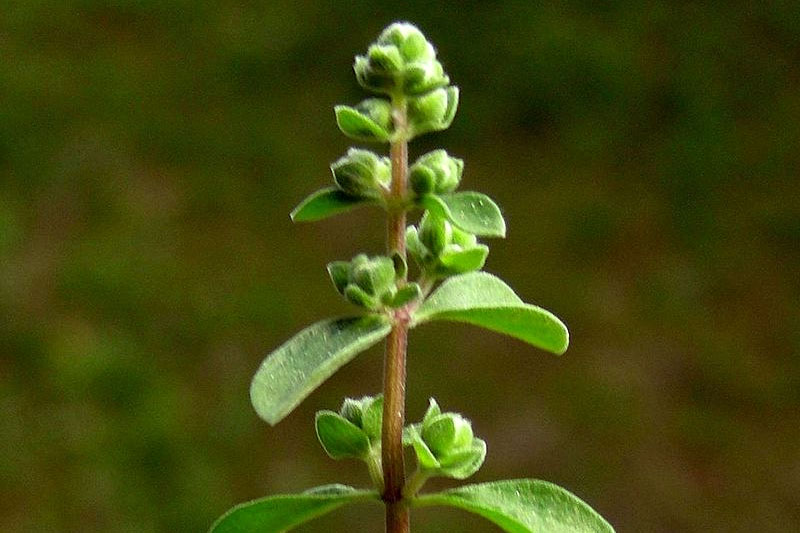
Marjoram plant with flower buds
What Is Marjoram Exactly?
Marjoram is an herb in the mint family that is commonly mistaken for oregano, although it has a milder flavor. Many say that it has a slight taste of citrus and sweet pine. It grows wild in Mediterranean countries such as Cyprus, Turkey, and Greece, and is a popular additive to their sauces, soups, and meat dishes. Because marjoram is a perennial, it can live for several years. However, it typically does not survive cold temperatures. If you decide to grow marjoram on your own, you may need to replant it in a pot during the colder months, depending on where you live. This herb prefers full exposure to the sun and is best planted in well-drained soil where it has room to spread.
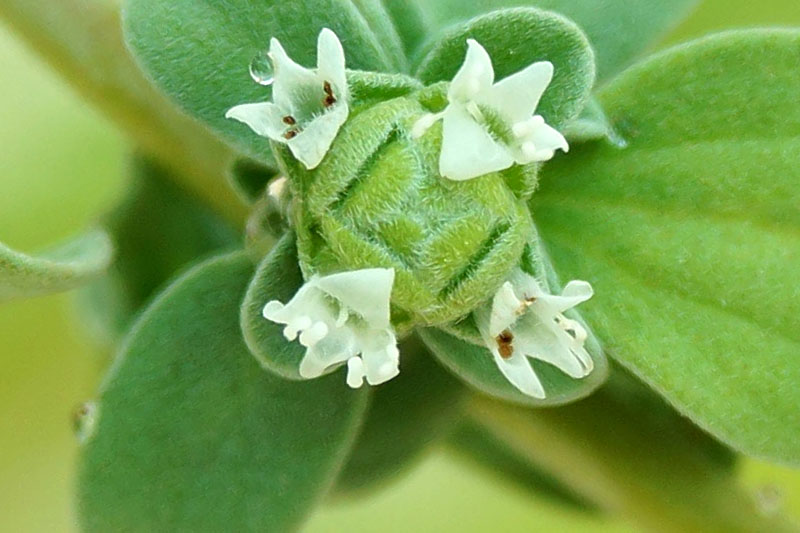
How Can I Use Marjoram?
The herb marjoram is often used in body care products such as soaps, lotions, and shaving gel. It is sometimes made into an essential oil used in aromatherapy treatments because of its apparent ability to sooth one to sleep and reduce stress. Some other proposed benefits of Marjoram include its ability to relieve flatulence, nausea, cramps, and swelling.
Aside from marjoram’s health and beauty uses, it also has many culinary uses. Both fresh and dried leaves can be used to season foods with its mild, bittersweet taste. It is often included in the popular English dish of roast goose with chestnut stuffing and in German cooking as a part of a spice mixture added to sausage. In most recipes, you will see marjoram called for in combination with other herbs and spices such as oregano, basil, and parsley.
Recipes That Call For Marjoram
Try the following recipes or experiment with some of your own in order to get a taste of marjoram.
Black-eyed Peas and Leeks
Recipe from Miriam Bale
- 4 leeks, dark green parts trimmed, quartered lengthwise, sliced in ½ inch segments
- 3 cups cooked black-eyed peas
- ¼ – ½ teaspoon dried marjoram
- 1 teaspoon dried tarragon
- 1 tablespoon olive oil
- 3-4 tablespoons butter
- salt to taste
The night before, cover black-eyed peas with water and soak them for at least four hours. Drain, place in a large pot, and cover with about 3 inches of water. Simmer until the peas are cooked through, salting generously in the last ten minutes of cooking. While the peas are cooking, heat the olive oil over medium heat with 1 tablespoon of the butter in a large pan. When hot, add some salt and stir in the leeks. Cook gently, stirring frequently until the leeks appear golden. Add the peas to the skillet. Cook until heated through, and then stir in the marjoram, tarragon, some salt, and the remaining 2-3 tablespoons of butter.
Grilled Fish with Orange and Marjoram
Recipe from Eric Werner
- 2 1 1/4-pound gray snapper, whole porgy, or branzino, cleaned
- 8 sprigs fresh marjoram + 1 tablespoon marjoram leaves (dried marjoram can be used)
- 2 small oranges or tangerines, peeled, seeded, and separated into segments
- 2 tablespoons olive oil
- salt and pepper to taste
Prepare a charcoal grill or a gas grill to medium-high. Make 3 diagonal slices spaced about 1 1/2″ apart on each side of fish. Season fish with salt and pepper to taste. Stuff each fish with 4 herb sprigs and segments from 1/2 orange. Rub each fish with 1 tablespoon oil. Grill fish for 3-4 minutes, or until skin no longer sticks. Carefully turn fish and grill until cooked through, about 3-4 more minutes. Transfer to platters and garnish with remaining marjoram leaves and orange segments.
Using marjoram in health and beauty care or in cooking is a great way to explore this less-often used herb. As you try out other uses for marjoram in recipes and in everyday life, you are sure to be delighted by its unique aromatic properties.
by Kenan White | Apr 3, 2013 | Herbs |
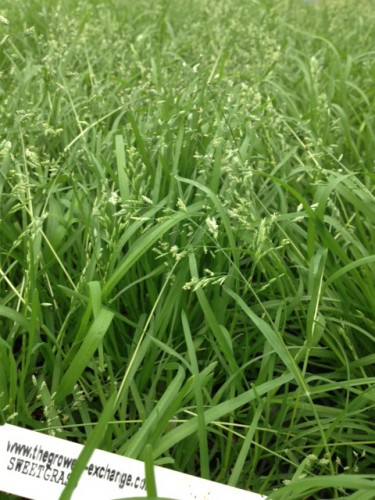
Sweet grass has long been considered a sacred plant for a variety of different cultures. One whiff of this aromatic beauty, and you’re certain to know why. It has a distinctive scent that you’ll never forget. It’s a fairly hardy perennial, and it’s as native to North America as it is to Europe. It reaches just 20 cm in height at its peak, but the leaves can stretch outward for quite a ways by the end of the growing season.
Traditional uses abound for this amazing plant. It was often used as incense, tea flavoring, a kind of tobacco, and even perfume. It was, and is, also used for basket making.
As phenomenal as it is, it’s actually harder than you may think to grow. Unless you already have a plant established, it can be fairly difficult to get some started in your yard. Only a fresh seed will actually germinate with this plant. I learned that bit the hard way. I purchased seeds for nearly two years straight, and they were almost always dead. I simply couldn’t get it to grow through a store-bought seed. The only way I could really get it going was by dividing my plants. It seems to take really well to that.
One year, I decided to try something a bit different – fresh seeds. I created an open flat of soil right next to my plants, then started splitting them open right over the soil. In what seems like mere minutes in my memory, I had created a new sweet grass plant.
Sweet grass has long had a close association with people, which is probably one reason why viable seeds are so hard to get these days. Like garlic and horseradish, humans tend to replant it everywhere, and nature has a way of knowing when to scale back on viable seed production.
There are few things quite as rewarding as sweet grass, though, so spend a bit of time experimenting with this very traditional plant on your own this season.







